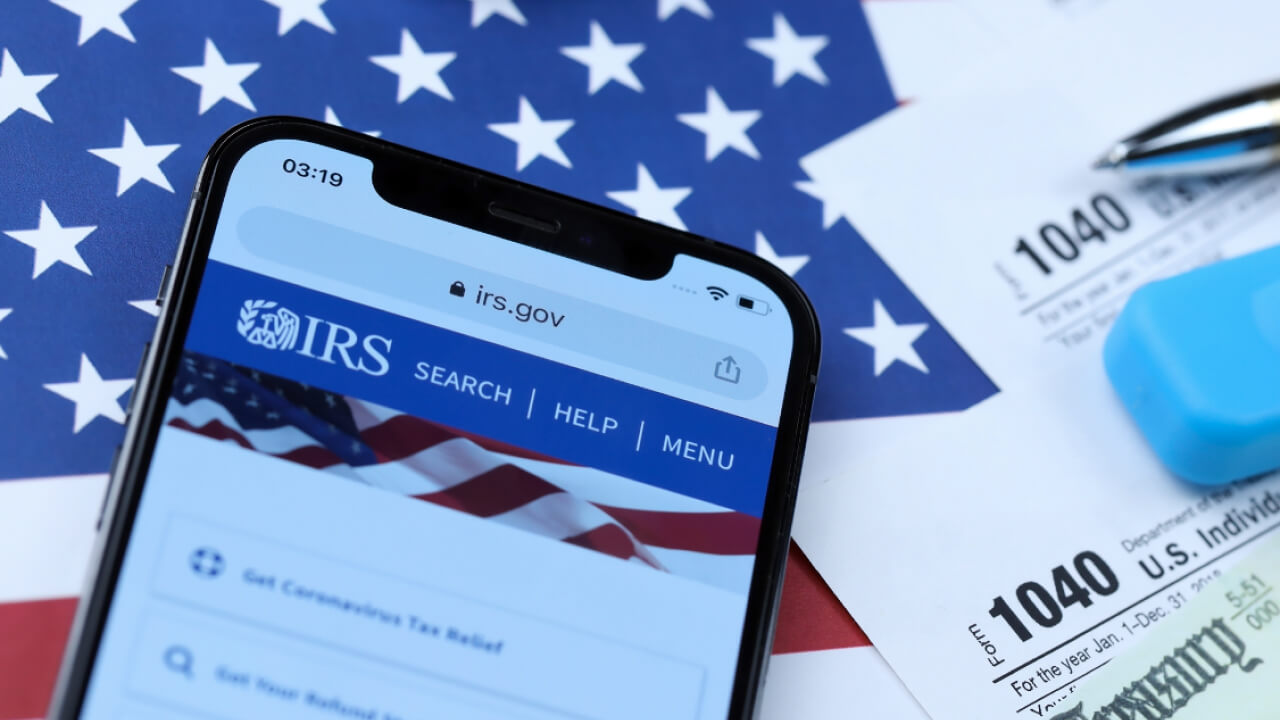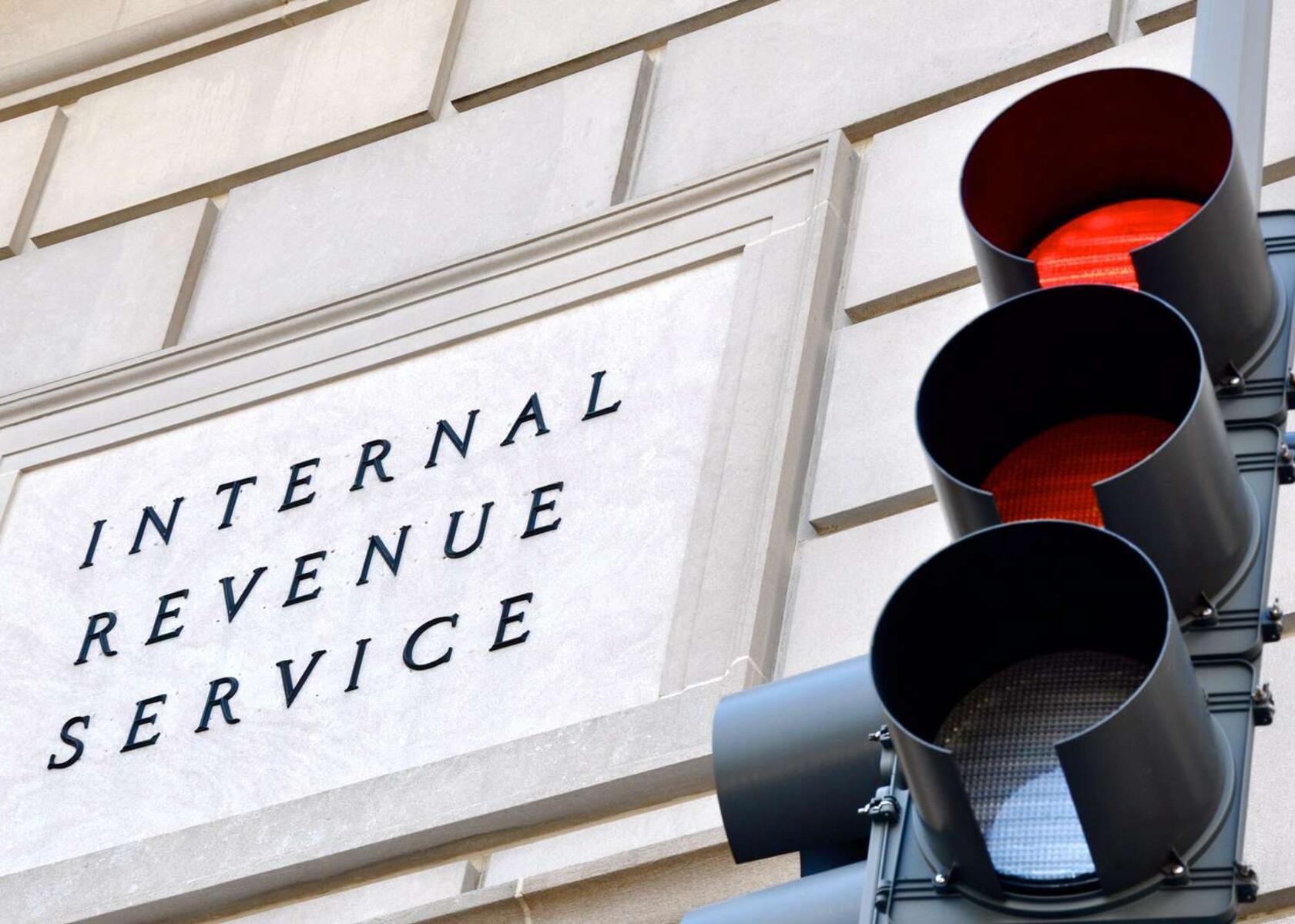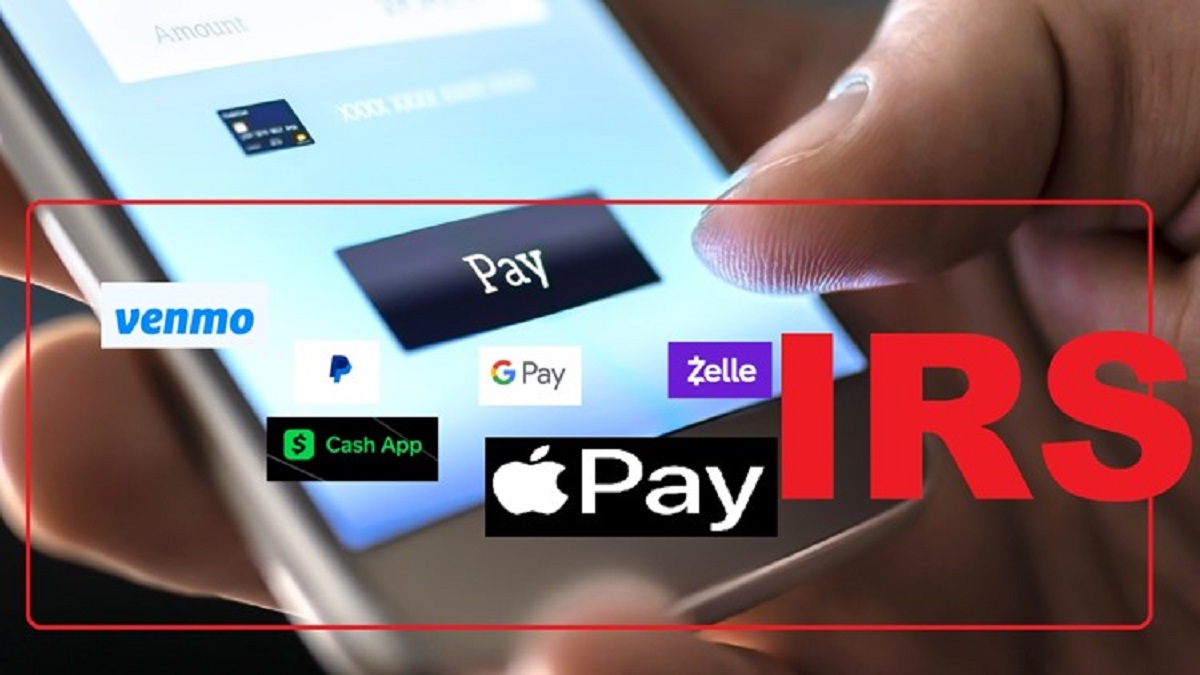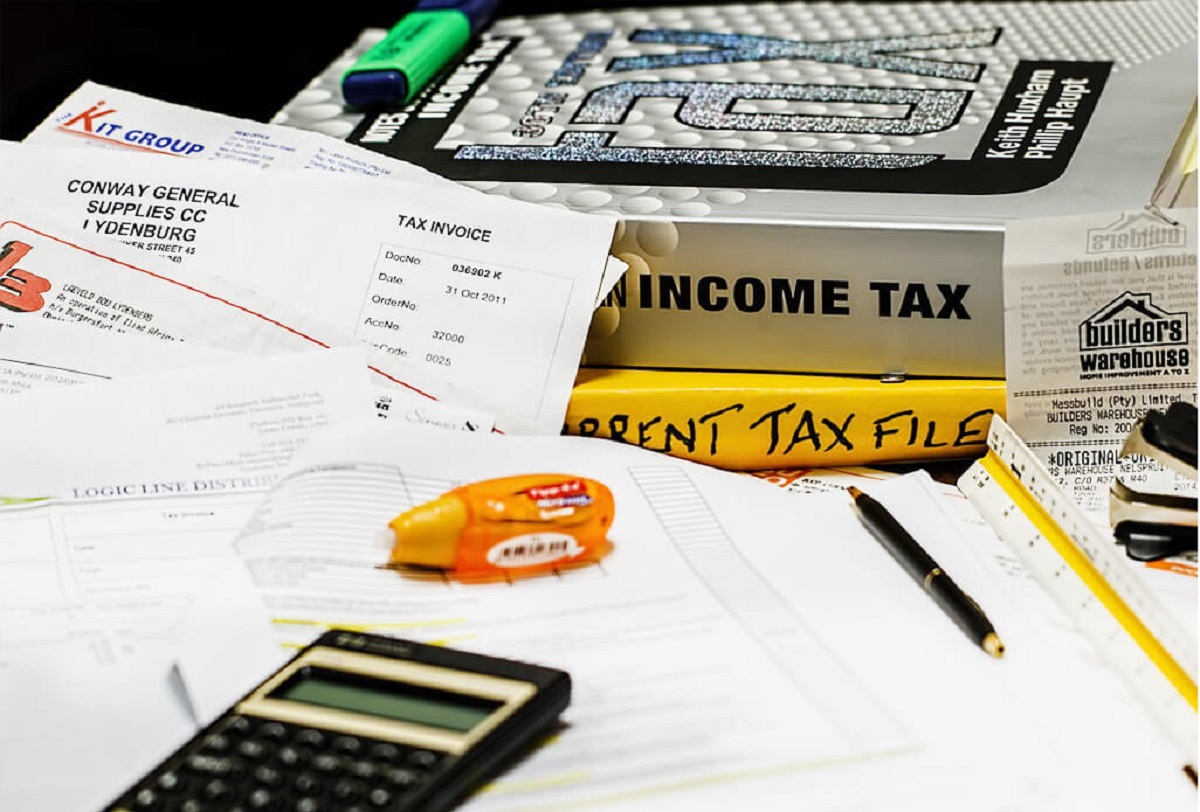Introduction
Welcome to our guide on how to change your banking information with the IRS. Whether you’ve recently opened a new bank account, switched financial institutions, or simply want to update your account details for your tax purposes, it’s important to ensure that the IRS has your most up-to-date information. This will help ensure a seamless transfer of your funds and prevent any delays or issues in receiving important payments from the IRS, such as tax refunds or economic impact payments.
Changing your banking information with the IRS is a straightforward process, and fortunately, there are multiple methods available for you to do so. In this article, we will walk you through the various options and provide step-by-step instructions on how to update your banking information to ensure a hassle-free experience.
Please note that it’s essential to follow the correct procedures and provide accurate information to avoid any potential complications or delays. Remember, the IRS is responsible for handling sensitive financial data, so accuracy and security should be a top priority when making any changes to your banking information.
In the following sections, we will discuss the reasons why you may need to update your banking information with the IRS, factors to consider before making the change, and the different methods you can utilize to update your information. Additionally, we will highlight important things to remember throughout the process to help you navigate the updating process with ease.
Why do I need to change my banking information with the IRS?
There are several reasons why you may need to change your banking information with the IRS. Understanding these reasons can help you determine whether updating your information is necessary for your specific situation. Here are a few common scenarios:
1. Changing Banks: If you have recently switched banks, it is crucial to update your banking details with the IRS. Failing to do so can result in delayed or missed payments, such as tax refunds or stimulus checks. Keeping your banking information current ensures that the IRS can deposit funds directly into your new account without any complications.
2. Updating Account Information: It’s also essential to update your banking information if any changes occur within your existing bank account. This can include a change in account number, account holder name, or other relevant details. By providing the IRS with accurate and updated account information, you can avoid potential payment issues and ensure that funds are directed to the correct account.
3. Preventing Fraud and Identity Theft: Regularly updating your banking information with the IRS can help safeguard your financial information and prevent potential fraud or identity theft. By keeping your details current, you minimize the risk of someone accessing your funds or personal information through outdated banking information.
4. Receiving Economic Impact Payments: During times of economic uncertainty, such as the COVID-19 pandemic, the IRS may issue economic impact payments to eligible individuals. If you are eligible to receive these payments and have not yet provided your banking information to the IRS, changing your information becomes vital to ensure that you receive the payment directly into your bank account.
5. Ensuring Timely Tax Refunds: If you anticipate receiving a tax refund, updating your banking information with the IRS ensures that your refund is deposited directly into your preferred bank account. This can expedite the refund process and eliminate the need for paper checks, resulting in a faster and more convenient refund experience.
By considering these factors and evaluating your specific circumstances, you can determine whether changing your banking information with the IRS is necessary. Ensuring updated and accurate information not only facilitates seamless financial transactions but also helps protect against potential fraud and ensures the timely receipt of any eligible payments.
Factors to consider before changing your banking information
Before proceeding with changing your banking information with the IRS, it’s important to take several factors into consideration. This will help ensure a smooth and successful process. Here are some key factors to keep in mind:
1. Accuracy of Information: Double-check that all the information you provide to the IRS is accurate and up-to-date. This includes your bank account number, routing number, and any other relevant details. Mistakes or inaccuracies can result in payment delays or even the funds being deposited into the wrong account.
2. Security Measures: Be cautious while updating your banking information and ensure you’re doing so in a secure manner. Avoid sharing personal or sensitive details over unsecured networks or through non-official IRS channels. It’s always a good practice to use secure websites or official IRS portals when submitting your updated information.
3. Timing: Consider the timing of your banking information change. If you’re expecting any imminent payments from the IRS, such as tax refunds or economic impact payments, it may be wise to delay updating your information until after you have received those funds. This will help prevent any potential disruption in receiving the payments.
4. IRS Communication: Keep an eye out for any official communication from the IRS regarding your banking information. The IRS may notify you about changes, updates, or issues related to your banking information through mail or secure online platforms. Stay informed and follow any instructions provided to ensure a smooth transition of your banking details.
5. Paper Check Option: Consider whether you prefer to receive payments via direct deposit or as paper checks. While direct deposit is generally faster and more convenient, some individuals may prefer the traditional paper check method. If you decide to change your banking information, ensure that the new account is set up to receive direct deposits, or be prepared to switch back to paper checks if needed.
6. Consultation: If you have any doubts or concerns about changing your banking information, consider consulting a tax professional or contacting the IRS directly. They can provide guidance specific to your situation and help you navigate the process smoothly.
By considering these factors, you can ensure that you are well-prepared to update your banking information with the IRS. Taking these precautions will minimize any potential issues and help you maintain smooth financial transactions with the IRS.
Methods to change your banking information with the IRS
When it comes to updating your banking information with the IRS, there are several methods available to choose from. Here are four common methods that you can utilize:
1. Using the Get My Payment tool: The IRS provides a user-friendly online tool called “Get My Payment” that allows you to check the status of your Economic Impact Payment (stimulus check) and update your banking information. By accessing this tool on the IRS website, you can provide your updated bank account details and ensure that any future payments are sent to your correct bank account.
2. Utilizing the Non-Filer: Enter Payment Info Here tool: If you haven’t filed a tax return and are eligible for an Economic Impact Payment, you can utilize the “Non-Filer: Enter Payment Info Here” tool on the IRS website. This tool not only allows you to provide your basic information but also enables you to enter your updated banking details for any future payments.
3. Sending a completed Form 8822-B to the IRS: Another method to change your banking information is by completing and mailing Form 8822-B, which is the Change of Address or Responsible Party-Business form. This form allows you to update various information, including your banking details, as well as your address and responsible party details. The completed form should be mailed to the appropriate IRS address provided in the instructions.
4. Contacting the IRS directly: If you prefer a more direct approach, you can contact the IRS directly by phone. The IRS has dedicated helplines to assist individuals with questions and concerns regarding their banking information. Speaking with an IRS representative can guide you through the process of updating your information and answer any specific queries you may have.
It’s important to note that the method you choose may depend on your specific situation, eligibility, and the purpose for updating your banking information. It’s recommended to review the IRS website or consult a tax professional to determine the most appropriate method based on your circumstances.
By utilizing one of these methods, you can easily update your banking information with the IRS and ensure that future payments are directed to the correct account. Remember to provide accurate information and follow the instructions provided by the IRS to ensure a successful update.
Using the Get My Payment tool
The Get My Payment tool is an online resource provided by the IRS to help you track and manage your Economic Impact Payments, commonly known as stimulus checks. In addition to checking the status of your payment, this tool allows you to update your banking information with the IRS. Here’s how you can use the Get My Payment tool to change your banking information:
Step 1: Visit the official IRS website and navigate to the Get My Payment tool. You can find a direct link to the tool on the IRS website’s homepage.
Step 2: Click on the “Get My Payment” button to access the tool. You may be required to provide some personal information, such as your Social Security number, date of birth, street address, and ZIP code, to confirm your identity.
Step 3: Once logged in, you will see information about your stimulus payment if it has been scheduled or has already been sent. Look for the “Need to change your bank account information?” option and click on it.
Step 4: Enter your updated bank account details, including the routing number and account number. Make sure to double-check the information for accuracy before submitting it.
Step 5: After providing the updated banking information, submit the changes. The Get My Payment tool will save your updated details, ensuring that any future payments are sent to the new bank account you specified.
Note: It’s important to use the Get My Payment tool responsibly and ensure that the information you provide is accurate. Depending on the status of your payment, you may be able to change your banking information only if your payment hasn’t been processed yet. If your payment has already been sent, updating your banking information through this tool may not be possible, and you will need to explore other options.
Using the Get My Payment tool is a convenient and secure way to update your banking information with the IRS, especially if you are expecting or have already received an Economic Impact Payment. By following the steps outlined above, you can ensure that any future payments are directed to the correct bank account, minimizing the chance of delays or complications.
Utilizing the Non-Filer: Enter Payment Info Here tool
If you haven’t filed a tax return and are eligible for an Economic Impact Payment, you can use the “Non-Filer: Enter Payment Info Here” tool provided by the IRS to submit your information and update your banking details. Here’s how you can utilize this tool to change your banking information:
Step 1: Visit the official IRS website and navigate to the Non-Filer: Enter Payment Info Here tool. You can find a direct link to the tool on the IRS website’s homepage.
Step 2: Once on the tool’s page, click on the “Non-Filers: Enter Payment Info Here” button to access the application.
Step 3: Fill out the required information in the application form. This includes providing your personal details such as your full name, Social Security number, date of birth, and contact information.
Step 4: In the section related to banking information, enter your updated bank account details, including the routing number and account number. Make sure to verify the accuracy of the information before submitting it.
Step 5: Review the information you entered for accuracy and ensure that all the required fields have been completed. Once you are confident that the information is correct, submit the application.
Note: It’s important to note that the Non-Filer: Enter Payment Info Here tool is primarily designed for individuals who are not required to file a tax return. If you have already filed a tax return or are required to do so, it’s recommended to use the appropriate tax filing methods rather than this tool.
Utilizing the Non-Filer: Enter Payment Info Here tool is a convenient option for those who are eligible for an Economic Impact Payment and need to update their banking information. By following the steps outlined above, you can ensure that the IRS has your correct bank account details, allowing for the direct deposit of any future payments.
Remember, it’s essential to provide accurate and up-to-date information while using this tool to avoid any potential payment issues or delays. Double-check your details before submitting the application to ensure a smooth and successful update of your banking information with the IRS.
Sending a completed Form 8822-B to the IRS
If you prefer a more traditional approach, you can change your banking information with the IRS by completing and mailing Form 8822-B. This form, known as the Change of Address or Responsible Party-Business form, allows you to update various details, including your banking information. Here’s how you can use Form 8822-B to change your banking information:
Step 1: Obtain a copy of Form 8822-B. You can download the form from the IRS website or request a physical copy by calling the IRS helpline.
Step 2: Fill out the form with accurate information. Complete the sections related to your personal information, including your name, Social Security number, and previous address.
Step 3: Locate the section of the form where you are instructed to provide your preferred bank account information. Enter the updated banking details, including the routing number and account number of your new bank account.
Step 4: Double-check the form to ensure that all the fields have been completed accurately. Any mistakes or omissions may lead to delays or issues with updating your banking information.
Step 5: Once you have reviewed the form and confirmed the accuracy of the information, sign and date it. Failure to sign the form may result in your request not being processed by the IRS.
Step 6: Make a copy of the completed form for your records. This will serve as proof of your request to update your banking information.
Step 7: Mail the completed Form 8822-B to the appropriate IRS address provided in the instructions. Ensure that you follow the mailing instructions precisely to avoid any delays in processing your request.
Note: Keep in mind that it may take some time for the IRS to process your request and update your banking information. Additionally, this method is generally more suitable for individuals who have recently moved or need to update other personal information along with their banking details. For specific questions or concerns, it is advisable to consult the IRS website or seek assistance from a tax professional.
By sending a completed Form 8822-B to the IRS, you can effectively update your banking information. Make sure to accurately complete the form and follow the mailing instructions to ensure a successful update with the IRS.
Contacting the IRS directly
If you prefer a more direct approach to change your banking information with the IRS, you can contact the IRS directly for assistance. By speaking with an IRS representative, you can get personalized guidance and address any specific concerns or questions you may have. Here’s how you can contact the IRS to update your banking information:
Step 1: Gather any necessary information before contacting the IRS, such as your Social Security number, tax identification number, and previous banking details. Having these details on hand can help streamline the process.
Step 2: Visit the IRS website to find the appropriate contact information. The website provides a list of phone numbers based on your specific needs and location. Choose the number that corresponds to your situation.
Step 3: Dial the phone number and follow the prompts to reach a live representative. The wait times may vary, so be prepared to wait on hold until an available representative can assist you.
Step 4: Once connected to an IRS representative, explain that you need to update your banking information. Provide them with the necessary details, such as your new bank account number and routing number. The representative will guide you through the process and provide any specific instructions or forms that need to be completed.
Step 5: Take note of any reference numbers, case numbers, or the name of the representative you spoke with. This information can be helpful for future reference or follow-up inquiries.
Note: It’s important to keep in mind that wait times when contacting the IRS can be lengthy, especially during peak tax seasons. It’s advisable to call during non-peak hours if possible or consider reaching out to the IRS early in the morning to minimize wait times.
By contacting the IRS directly, you can receive personalized assistance and ensure that any questions or concerns regarding your banking information update are addressed. The IRS representative will guide you through the necessary steps, provide specific instructions, and help ensure a successful change to your banking details.
Remember to stay patient and have all relevant information readily available when contacting the IRS. By being clear and concise in your communication, you can work efficiently with the representative and effectively update your banking information.
Important Things to Remember When Changing Your Banking Information
When changing your banking information with the IRS, there are several important factors to keep in mind to ensure a smooth and successful transition. Here are some key points to remember:
1. Accuracy: Double-check the accuracy of the information you provide. Make sure to enter the correct routing number and account number when updating your banking details. Any errors or typos could result in payment delays or the funds being directed to the wrong account.
2. Security: When updating your banking information, prioritize security. Avoid sharing personal details or sensitive information over unsecured networks or through non-official IRS channels. Stick to reliable and secure websites or official IRS portals when submitting your updated information.
3. Timing: Consider the timing of your banking information change. If you are anticipating any imminent payments or refunds from the IRS, it may be wise to delay updating your information until after you have received those payments. This helps prevent any disruption in receiving the funds.
4. Communication: Stay informed about any official communication from the IRS regarding your banking information. They may send notifications or updates through mail or secure online platforms. Read these communications carefully and follow any instructions provided to ensure a smooth transition of your banking details.
5. Documentation: Keep a record of any documentation related to your banking information update. This includes copies of forms, confirmation emails, or any other proof of the changes you have made. These documents can be useful for reference in case of any discrepancies or follow-up inquiries.
6. Patient and Responsive: Understand that it may take some time for the IRS to process your request and update your banking information. Be patient during this process and be responsive if the IRS requests any additional information or documentation. Promptly provide any requested information to avoid further delays.
7. Professional Help: If you have any doubts or concerns about changing your banking information, consider seeking professional help from a tax professional or accountant. They can provide guidance tailored to your specific situation and help navigate the process more effectively.
By keeping these important considerations in mind, you can ensure a smooth and successful change of your banking information with the IRS. Remember to prioritize accuracy, security, and communication throughout the process to minimize any potential issues or delays and maintain a seamless financial relationship with the IRS.
Conclusion
Changing your banking information with the IRS is a crucial step in ensuring that your financial transactions with them are smooth and efficient. Whether you have switched banks, updated your account details, or simply want to keep your information current, there are various methods available to make this change.
Before proceeding with updating your banking information, it’s essential to consider factors such as accuracy, security, timing, and documentation. By doing so, you can minimize any potential issues or delays and ensure a successful update with the IRS.
The methods available for updating your banking information include using the Get My Payment tool, utilizing the Non-Filer: Enter Payment Info Here tool, sending a completed Form 8822-B, or contacting the IRS directly. Each method has its own advantages and considerations, so review them carefully to determine the most appropriate option for your situation.
Throughout the process, keep in mind the importance of accuracy, security, and timely communication. Double-check all the information you provide, prioritize the security of your personal details, and stay responsive to any communication or requests from the IRS. Maintaining clear and accurate records of your banking information update is also crucial for future reference.
If you have any concerns or require specific guidance, consider seeking professional help from a tax professional or accountant. They can provide personalized assistance based on your unique circumstances and ensure that the update is handled correctly.
By following these important steps and considerations, you can successfully change your banking information with the IRS and maintain a seamless financial relationship with them. Regularly updating your banking information helps avoid payment delays, prevent fraud, and ensure that any eligible payments or refunds are deposited directly into your preferred bank account.
Remember, accuracy, security, and communication are key when it comes to updating your banking information with the IRS. By staying informed and proactive, you can ensure that your financial transactions with the IRS are hassle-free and convenient.

























